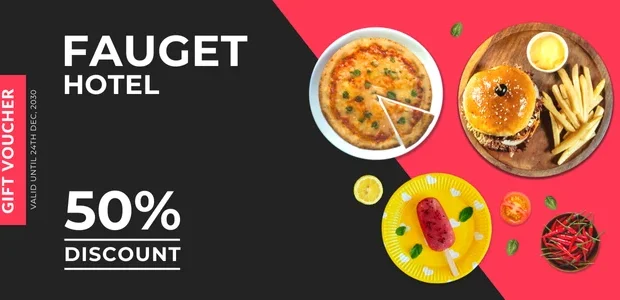
Coupon codes are everywhere—from your inbox and social media feeds to browser extensions and checkout pages. But have you ever wondered why brands are so generous with these discounts? Are they just trying to clear inventory, or is there a deeper strategy behind the savings?
In today’s hyper-competitive market, coupon codes have evolved into powerful tools for more than just slashing prices. They help brands acquire customers, drive loyalty, manage data, influence behavior, and boost long-term profitability—if used strategically.
Let’s break down why brands offer coupon codes, the psychology behind them, and how they truly impact businesses.
1. Customer Acquisition: The Hook That Converts
One of the most obvious—and important—reasons brands offer coupon codes is to attract new customers.
In a crowded digital space where attention spans are short and competition is fierce, a well-placed “10% OFF” or “Free Shipping” coupon can be the difference between a browser and a buyer.
Why it works:
-
Reduces initial hesitation: Discounts lower the perceived risk of trying a new brand.
-
Boosts conversion rates: On average, sites offering discount codes see conversion increases of up to 30%.
-
Creates urgency: Limited-time offers push customers to act now rather than later.
Example:
A new DTC skincare brand might offer 15% off your first purchase. This lowers the psychological barrier and encourages first-time buyers to try their product—often leading to repeat purchases if the experience is positive.
2. Increasing Average Order Value (AOV)
Coupon codes are not always about giving money away—they’re often used to increase how much a customer spends.
Brands frequently use threshold-based discounts (e.g., “$20 off orders over $100”) to encourage customers to add more items to their carts.
Benefits for brands:
-
Higher transaction size = more revenue per order.
-
Offsets discount costs with larger basket sizes.
-
Clears inventory faster, especially for seasonal items.
Strategy in action:
Clothing retailers often offer “Buy 2, Get 1 Free” deals. The goal? Encourage you to spend more than you intended—thus increasing total sales even after applying the discount.
3. Customer Retention and Loyalty
Acquiring a customer is hard—but keeping them is harder. Coupon codes can be powerful tools for retention.
Brands use personalized coupons, loyalty discounts, or birthday offers to:
-
Reward repeat customers.
-
Reactivate dormant users.
-
Show appreciation.
Impact on business:
-
Improves Customer Lifetime Value (CLTV).
-
Reinforces brand relationship and goodwill.
-
Reduces churn rates.
Example:
A food delivery app might send a user a 20% coupon after 30 days of inactivity. This re-engagement strategy often pays off—especially if the user resumes weekly orders afterward.
4. Clearing Excess Inventory
While it’s not the only reason, coupon codes are often used to offload excess or outdated inventory—especially in fashion, electronics, and seasonal products.
Why it works:
-
Encourages quick sales of unsold stock.
-
Frees up warehouse space.
-
Prevents loss from markdowns or waste.
Example:
A tech retailer may offer “40% OFF last-gen phones” after launching a new model. This ensures old inventory sells before it depreciates further in value.
5. Gaining Customer Data (Ethically)
Coupon codes are often used to incentivize data sharing. In exchange for a discount, users willingly provide:
-
Email addresses.
-
Phone numbers.
-
Purchase behavior data.
This data is gold. Brands can use it for:
-
Email marketing.
-
Retargeting.
-
Product development insights.
Tactic in play:
“Get 10% off when you sign up for our newsletter.” This builds an owned audience and reduces dependency on paid ads.
6. Boosting Brand Awareness and Referrals
Coupon codes often go viral. Influencers, affiliates, and deal-sharing communities can rapidly amplify a brand’s reach.
Affiliate codes, for instance, serve a dual purpose:
-
Drive traffic from trusted sources.
-
Only cost money when conversions happen.
Case Study:
Fitness influencers often share their “20% OFF” code for supplements. The influencer earns a commission, the customer gets a deal, and the brand gains a new (often loyal) customer.
It’s a win-win-win.
7. Psychological Triggers and Behavioral Economics
Beyond financial strategy, coupon codes tap into deep psychological mechanisms:
-
Loss aversion: People fear missing out on a good deal.
-
Anchoring: Discounts frame the full price as more valuable.
-
Reciprocity: A discount feels like a gift—prompting customers to return the favor by purchasing.
Impact on brand perception:
-
Brands appear more generous and approachable.
-
Customers associate deals with fairness and value.
However, brands must balance perception—overusing discounts can cheapen brand image if not managed carefully.
8. Competing in a Price-Sensitive Market
In some industries, especially commoditized or budget-focused sectors (like fast fashion, travel, or electronics), discounts are a necessity to stay competitive.
A coupon code may be the deciding factor when:
-
Price is the #1 concern.
-
Competitors offer similar products at similar quality.
-
Consumers use price-comparison tools or browser extensions.
Example:
Online travel agencies use limited-time codes to stay ahead of comparison platforms like Google Flights or Skyscanner, where price is king.
9. Tracking Campaign Effectiveness
Coupon codes help brands track the ROI of marketing campaigns more precisely.
By issuing unique codes for:
-
Facebook ads
-
Influencer collaborations
-
Email campaigns
-
brands can see what channels actually drive results.
Benefits:
-
Improved budget allocation.
-
Better audience targeting.
-
Smarter scaling of campaigns.
10. Risks and Missteps: What Can Go Wrong
While coupon codes can be powerful, misusing them can backfire:
-
Over-reliance: If customers expect a discount every time, they may avoid paying full price—hurting margins.
-
Profit loss: Poorly managed coupon programs can eat into profits, especially for low-margin businesses.
-
Coupon abuse: People may exploit codes, share them widely, or use bots to manipulate discounts.
That’s why data, segmentation, and smart timing are critical.
Final Thoughts: A Strategic Tool, Not Just a Discount
Coupon codes are far more than temporary price cuts—they’re a versatile, data-driven, psychology-fueled marketing tool.
When used correctly, coupon strategies can:
-
Acquire valuable new customers
-
Increase order sizes and frequency
-
Create loyalty
-
Deliver precise marketing ROI
But like any tool, they require discipline. Brands that use coupons strategically, sparingly, and with purpose will see long-term benefits—not just short-term spikes.
So the next time you see that “15% off” box at checkout, know that it’s not just about generosity—it’s a calculated move in a broader strategy to build a profitable and loyal customer base.
Need Help Designing a Coupon Strategy?
Let me know if you’d like a guide on A/B testing coupons, setting thresholds, or choosing platforms for distribution (Shopify, WooCommerce, Klaviyo, etc.).
